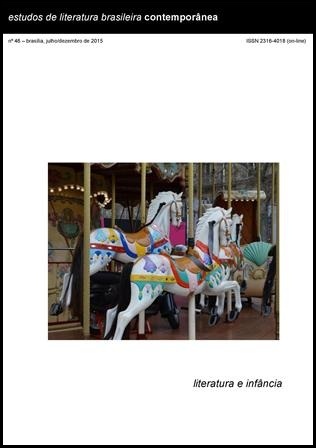“Gente-grande”:
denúncia da pequenez dos adultos
DOI:
https://doi.org/10.1590/2316-4018467Abstract
O presente artigo analisa o processo de representação instituído no conto Gente-grande”, de Domingos Pellegrini, a partir da concepção de que o texto literário é o resultado de uma reflexão crítica do autor diante da realidade e um trabalho de exploração dos recursos da linguagem, atividades que encontram seu correlato na ação do leitor. A estrutura comunicacional em “Gente-grande” e suas estratégias narrativas induzem o leitor a compartilhar do drama das personagens infantis, gerado pela conflituosa separação dos pais; paralelamente, o conto mobiliza-o a identificar situações análogas no contexto contemporâneo, ao mesmo tempo em que o instiga a enfocar os elementos composicionais que instalam a articulação entre ficção e realidade. Na visão integradora que daí resulta, sobressai a imagem da criança estupefata diante da inconsequência dos adultos e se manifesta a denúncia da violação da harmonia familiar, a que a infância tem direito. Nesse sentido, o conto de Domingos Pellegrini exerce a função formadora da arte, visto que atua sobre o leitor, sensibilizando-o em face dos dramas humanos, particularmente o das crianças.
References
CANDIDO, Antonio (2002). Textos de intervenção. São Paulo: Duas Cidades; 34.
ECO, Umberto (1986). Lector in fabula. São Paulo: Perspectiva.
ECO, Umberto (2013). Obra aberta. São Paulo: Perspectiva.
ISER, Wolfgang (1996). O ato da leitura: uma teoria do efeito estético. São Paulo: 34. v. 1.
PELLEGRINI, Domingos (2005). “Gente-grande”. Melhores contos. São Paulo: Global.
RICOEUR, Paul (1983). Tempo e narrativa. Campinas: Papirus.
Downloads
Published
Issue
Section
License
Authors who publish in this journal agree to the following terms:
a) The authors maintain the copyright and grant the journal the right of first publication, the work being simultaneously licensed under the Creative Commons Attribution License-Non Commercial 4.0 which allows the sharing of the work with acknowledgment of the authorship of the work and publication this journal.
b) Authors are authorized to enter into additional contracts separately, for non-exclusive distribution of the version of the work published in this journal (eg publish in institutional repository or as a book chapter), with authorship recognition and publication in this journal.
c) Authors are allowed and encouraged to publish and distribute their work online (eg in institutional repositories or on their personal page) after the editorial process, as this can generate productive changes, as well as increase the impact and citation of published work (See The Effect of Free Access).
d) The authors of the approved works authorize the magazine to, after publication, transfer its content for reproduction in content crawlers, virtual libraries and the like.
e) The authors assume that the texts submitted to the publication are of their original creation, being fully responsible for their content in the event of possible opposition by third parties.


